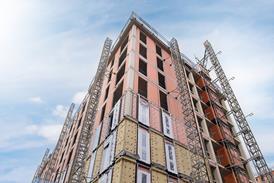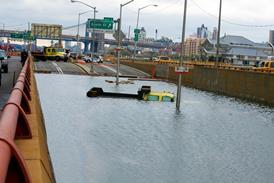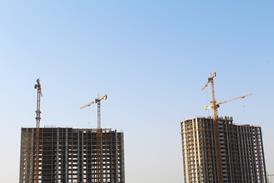The EWS1 form was meant to offer reassurance about fire safety, but in liability terms it’s a death trap for consultants

Since the Grenfell tragedy, we have seen a plethora of reforms designed to improve fire safety, especially in high-rise, multi-occupied buildings, including the Building (Amendment) Regulations 2018, which brought important changes for the use of combustible materials. Meanwhile the draft Building Safety Bill was published in July, and the government’s consultation on fire safety ends on 12 October.
The release of Form EWS1 in December 2019 by the RICS, the Building Societies Association and UK Finance was aimed at addressing concerns on buildings completed before the 2018 changes came into force. Mortgage lenders needed to know if remedial works would be required and, if so, what would be the cost and the impact on value.
Form EWS1 has to be completed by a member of one of 21 professional bodies specified by the government, who must confirm either that the external wall contains materials unlikely to support combustion or that it contains combustible materials. Initially heralded as bringing longed-for clarity and protection for property owners, leaseholders and mortgage lenders, the form has in fact caused controversy and concern, not least because it contains real risks for the consultant and has important professional indemnity insurance implications.
The consultant must specify which of two categories the building falls within. Option A is for where the cladding material and insulation in the external wall system “meet the criteria of limited combustibility or better and cavity barriers are installed to an appropriate standard in the relevant locations”. Option B is for where the primary materials used in the external building system are combustible. The consultant must then confirm either that the risk of fire is so low as to be deemed negligible or that remedial works are necessary.
The consultant will owe to the recipient of the form a duty of care to complete it correctly, and any error may lead to a claim for negligence. The onus of responsibility to draw the correct conclusions on the building’s fire safety is considerable. How should consultants satisfy themselves that cavity barriers have indeed been installed in the relevant locations? To what extent should they rely on as-built record drawings? How can a consultant be confident of the composition of the external wall over the entire structure of the building? Should the consultant go so far as to open up the walls and test cladding materials? The answers are far from clear.
Additional concerns arise where a consultant concludes building safety is inadequate and that remedial work is required. If the consultant was responsible for the original design relating to the external wall, they could be walking into a professional negligence claim by admitting inadequate design.
The RICS minimum terms now enable insurers to exclude cover for any surveyor completing the EWS1 form, unless they have sought their insurers’ agreement
Most worrying is the lack of any limit on the consultant’s liability. We would expect to see provisions linking the form to the related appointment, and providing that the consultant shall have no greater or longer-lasting liability than that which arises under the related appointment. There is no such protection for the consultant – if there is a claim, liability will be unlimited.
Professional indemnity insurers are naturally wary. The RICS minimum terms now enable insurers to exclude cover for any surveyor completing the EWS1 form, unless they have sought their insurers’ agreement that such activity will be covered, prior to inception of the policy. We have seen other insurers follow suit and attempt to impose similar restrictions on cover for industry professionals signing the form. Insurers can exclude cover completely, or apply a different set of more onerous terms, for example aggregation conditions or a larger excess.
Our advice is simple: if possible, do not sign the EWS1 form. If you are unable to avoid doing so, try to provide your own wording, ensuring that it links to the original appointment and provides the necessary protections and ensuring you have checked with your insurers before providing it. As with any certificate or reliance letter, you should be satisfied with the statements you are making – and if not, do not put pen to paper. This seems like an obvious statement, but time and time again we see consultants signing certificates without carrying out proper enquiries or checks and without restrictions on scope or liability, often for no or little extra fee.
The pool of consultants with the specialist expertise required to complete the form is small; subtract from this those who are unwilling to do so and the delays to property transactions are significant. Consider also the fact that a number of lenders, ever cautious, are demanding an EWS1 in circumstances where it is not actually required, and it is no wonder that there is a backlog within the housing market.
The issues arising from the use of this form call for an industry-wide response. The government, in response to a petition relating to the EWS1 form, has stated that it is funding an industry-led proposal for the British Standards Institution to produce technical guidance to support fire risk assessments of external wall systems. It has also said it is hosting regular roundtables with the insurance industry to encourage the availability of professional indemnity insurance.
No one is denying that change is needed to bring about better building and fire safety in the industry, but that change must be aligned with changes to professional indemnity insurance so that liability risks are appropriately underwritten, thereby allowing consultants to stay in business and continue to deliver the specialist advice and services fundamental to safe building practices. A signature on form EWS1 or similar without insurance backing is not the answer.
Sheena Sood leads the construction, engineering and infrastructure team at Beale & Co



























No comments yet